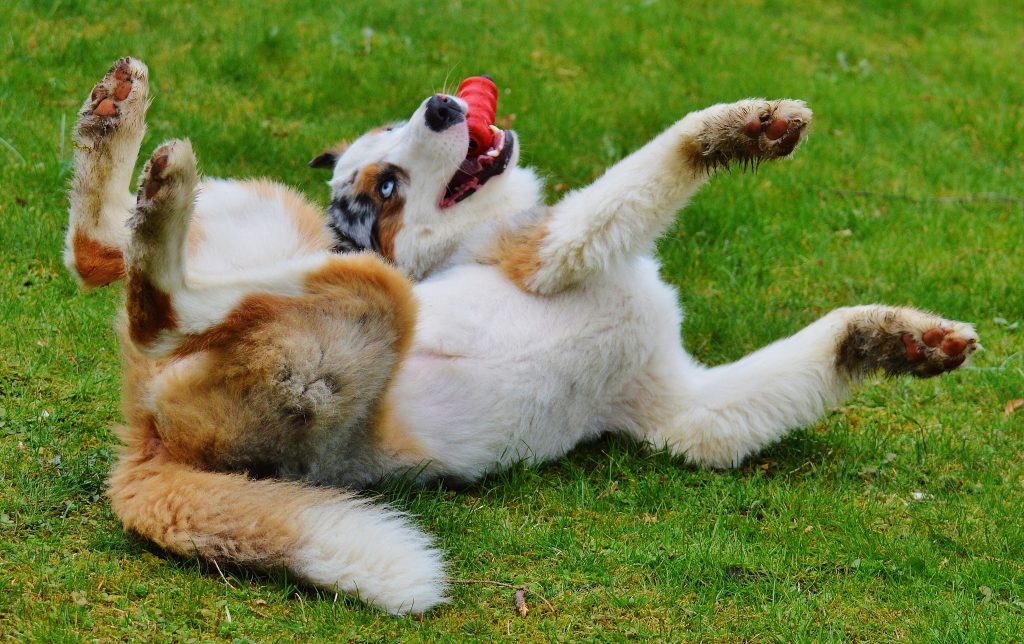You may have heard people say that “a good dog is a tired dog”. But how is this done safely? How much exercise does a dog need?
My usual response is that it is often easier and more beneficial to tire a dog out mentally rather than physically. This is especially true if you have a high energy, enthusiastic, boisterous dog or puppy.
However, correct physical exercise is very beneficial to your dog’s health and well being. Physical exercise benefits the heart, circulation, muscle tone, mobility, fitness and mental well being.
So, what is the correct type and amount of exercise for a dog?
Well, like a lot of other areas when caring for our dog, the answer is – it depends.
There are many factors to consider when determining the correct exercise for your dog including:
Age
Current body condition score
Breed
Medical issues
Temperature/weather conditions
Co-ordination and movement
Behavioural traits/mental state
Fitness goals
Current level of fitness
Training level (e.g. can your dog walk/run on a loose lead or not)
Your dog’s veterinarian, physiotherapist or other qualified expert can help you design a program to meet your dog’s exercise needs.
For this blog I would like to focus on age which seems to be an often-overlooked factor (especially for dogs over 16 weeks).
Why is age important?
The main consideration is skeletal development, in particular the age the growth plates close. The growth plates (epiphyseal plate or physis) are the growing tissue near the end of bones. The growth plates influence the mature length and shape of the bone and ultimately your dog’s conformation.
These growth plates are the weakest area of a growing skeleton. Damage to growth plates can occur for several reasons including:
over use like excessive exercise or repetitive actions,
physical trauma like falls, running into objects, jumping from a height,
some diseases.
Growth plate closure times vary depending upon the bone and individual dog. While reviewing the literature on this topic I came across a recent publication which presented new information on age of growth plate closure.
The table below summarises the latest research (Sutton et al. 2018) on growth plate closure ages.
| Skeleton part | Age of closure* |
| Spine | 7 – 12 months |
| Foreleg | 10 – 24 months |
| Pelvis | 10 -12 months (mostly; however, the iliac crest closes at 2-3 years) |
| Hindleg | 12- 15 months** |
* add a further 3-6 months for giant breeds
** At 6 months most of the growth plates in the hind leg are still open and susceptible to injury.
This means that we need to be very careful with the type and amount of exercise our puppy, juvenile and young adult dogs do.
How much exercise does a puppy need?

This question is best discussed with your dog’s physiotherapist or veterinarian, who can advise you on your dog’s specific needs. If you are intending to participate in strenuous sports with your dog then please discuss this with your dog’s veterinarian and consider if x-rays to confirm growth plate closure are recommended.
As I general guideline I refer to Dr Lisa Iverson (See Spot Run Veterinary Rehabilitation and Hydrotherapy) blog. Dr Iverson has a post which describes suitable exercise for puppies under 3 months through to dogs at the age of growth plate closure.
The below exercises for dogs have been modified from Dr Iverson’s recommendations.
Exercise for puppies under 3 months
no stairs
self-directed play on a variety of surfaces like grass, shavings/sawdust, dirt and sand (I would add that the sand and sawdust in particular are not too deep)
play with similar size and age puppies or with very gentle adult dogs
going through tunnels and walking on various non-slip surfaces
Exercise for puppies 3 – 6 months
introduce puppy to stairs with good non-slip surfaces
basic stationary obedience like stand, down, stay, hand target, line out etc.
introduce loose lead walking (less than 10 minutes) – can start to teach directions on these walks
start walking on low planks, low balance cushions, low caveletti etc.
Exercise for young dogs 6 months to growth plate closure
introduce swimming (less than 10 minutes)
loose lead walking (less than 15 minutes)
tricks like commando crawl, reverse, roll-over and beg
teach skills like jumping (at heights less than the dog’s wrist height)
Exercise after growth plate closure
begin endurance training like jogging or hiking (introduce gradually and build slowly)
increase swimming
gradually increase jump height
weave poles can be introduced
Jane Killion (Puppy Culture®) has an exercise chart which I also refer to. The Puppy Culture® chart has many similarities (with additional suggestions) to the above guidelines and can be found at https://www.puppyculture.com/new-exercise-chart.html.
I hope this post helps you figure out the answer to the question – how much exercise does your dog need?
If you are worried about how to keep to your young boisterous dog calm while you follow the above recommendations, then read my top 3 tips for living with high energy dogs for ideas.
Reference
Sutton L. K., Byrd, J. H. and Brooks, J. W. (2018) Age determination in dogs and cats in Brooks, J. W. (ed.) Veterinary Forensic Pathology, Volume 2 Springer International Publishing




